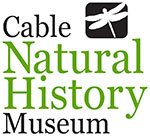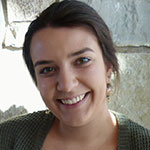
Panama | Connecting Hemispheres in Panama: Birding and Culture with Cable Natural History Museum
Panama City
Dec 11, 2023
Upon arrival at Tocumen International Airport in Panama City, meet your driver and transfer approximately 45 minutes to the hotel, which is situated in the Old Town, located in the Plaza Mayor. Check-in begins at 3 pm. This is an international arrival day, with most flights arriving in the evening; therefore, no activities or meals are planned today.
Panama City
Dec 12, 2023
This morning, meet for a welcome breakfast and orientation to the program and Panama City at the hotel before heading out to explore the historical wonders of the city. Begin with some morning birding at the Metropolitan Natural Park. Next, head to the Miraflores Locks Visitor Center to view the locks at work and watch ships pass through the canal. Have lunch at a local restaurant, then continue exploring Panama with a visit to the historical district of Casco Viejo, or Casco Antiguo, built in 1671 after the destruction of Panamá Viejo by the English privateer Henry Morgan. Casco Viejo's parks and narrow streets are lined with colorful buildings representative of Spanish, French, and early American architectural styles. This eclectic collection of architectural styles reflects the city's role as an international trade center and cultural melting pot long before the building of the canal. Explore the Metropolitan Cathedral, Municipal Palace, National Theater, French Embassy, and France Square. Return to the hotel to rest before meeting your group at the hotel restaurant for dinner.
El Valle de Anton
Dec 13, 2023
After an early breakfast at the hotel, head over to the Panama Bay Mudflats for shorebird viewing, before leaving for the Antón Valley. Have lunch en route. Upon arrival in Antón Valley, visit Butterfly Haven, which features a 1,500-square-foot enclosure containing more than 250 beautiful butterflies, as well as educational exhibits. It is also possible to see hummingbirds and other tropical birds feeding in the gardens. Continue to your accommodation, check in and then meet for dinner at the hotel restaurant.
El Valle de Anton
Dec 14, 2023
Breakfast at the hotel before departing early to go birding at Cerro Gaital Natural Monument. The lush, 827-acre nature reserve protects the mountainous terrain surrounding El Valle de Antón and is home to more than 300 bird species. Some of the best birding is done along the fringes of the reserve, where vegetation is less dense. Migrant raptors can be seen here, as well as residents like the Barred Hawk and the Bat Falcon. Look for the Tawny-crested Tanager, Chestnut-capped Brushfinch, Orange-billed Nightingale-Thrush, Green Hermit, and Spotted Woodcreeper. This afternoon, you will visit organizations dedicated to the protection of Panama's wildlife. Visit APROVACA Orchid Nursery and Conservation Center, a non-profit organization established to conserve and protect native orchids. Stroll the orchid garden and the nursery, and learn about their project to reintroduce endemic orchids back into their natural habitats. Then, visit the Discovery Center at El Valle Amphibian Conservation Center Foundation, which serves as an educational resource to learn about amphibians, reptiles, and other endangered species in Panama. Today, lunch and dinner will be at the lodge.
Chitre
Dec 15, 2023
Morning hike on the India Dormida trial. Return to the lodge for lunch then depart for Chitre. Make a stop in Parita, a town in the Herrera Province of Panama, to visit artisans who craft handmade drums or tambores, one of Panama's national symbols. Tambores are an instrument used in traditional Panamanian music with Indigenous, African, and European influence. Learn about the process of building a set of drums, which requires significant expertise in order to choose the right type of wood and leather to produce the unique sound of the tambor. Traditionally, leather from deer, goat, or wild pig was used for the best sound; however, as most of those species are protected, cow leather is now used almost exclusively. The wood must be cut into the right size and shape before being moistened, assembled, and dried in the shade. Continue the journey to Chitre with a stop en route to purchase some Pan de la Arena, the most famous artisan bread in the country. Tonight, enjoy dinner with a local family to learn about their life experiences and story in Panama.
Chitre
Dec 16, 2023
After an early breakfast, visit the home of a local artisan who makes Polleras, Panama's stunning national dress. Panama's Pollera originates from a Spanish dress from the 16th or 17th century, which was much simpler than today's version of the Pollera. There are many different types of Polleras, from simple colorful skirts to handcrafted and beautifully embroidered Polleras de Gala, which are considered one of the world's most beautiful national costumes. Panamanian women typically wear the Pollera for festive events and celebrations and complement the beautiful dress with ostentatious gold jewelry and Tembleques, intricately detailed hair accessories. These are made of fish scales, wires, pearls, and crystals, and they come in the shape of flowers, like roses and orchids, or animals, like butterflies, hummingbirds, peacocks, and more. They are called Tembleques (from the verb "temblar" in Spanish, which means to shake or tremble) because they are made out of flexible materials that shake when the women make a movement while walking or dancing. Enjoy the opportunity to have an immersive experience with the artisans in their workshops and learn how a skirt is made. Have lunch at their home, and then visit other local artisans who make pottery and masks, some more of Panama's most famous folkloric accessories. Return to the hotel for some time at leisure, or enjoy an optional nature hike. This evening, have dinner at a local restaurant.
Gamboa
Dec 17, 2023
This morning, have breakfast at the hotel. Then, depart for Panama City, with lunch en route, to visit the Biomuseo, Panama City's museum that showcases the country's natural history and impact on the world's biodiversity. The strikingly colorful building was designed by world-renowned architect Frank Gehry. It represents the saga of the Isthmus of Panama, a land that united two continents, changed the world's biodiversity, and connected the Atlantic and Pacific oceans. Inside, eight permanent exhibits tell the story in graphic detail. Arrive at Gamboa later in the day and have dinner. Tonight, enjoy an optional guided nocturnal safari around the reserve in a "Chiva" truck.
Gamboa
Dec 18, 2023
After breakfast, travel toward Lake Alajuela, with discussions en route about indigenous cultures and their history in Panama. Upon arrival at the Chagres River, board dugout canoes for the journey through the dense jungle. Upriver, step out of the dugout canoes and experience a short hike (which could be a bit muddy) to a beautiful waterfall in the midst of the rainforest. Those who want to cool off can take a swim in the refreshing pool just beneath the waterfall. Continue to the village of the Emberá, one of seven indigenous tribes in Panama. The people of the Emberá community will provide a warm welcome and share about their life. The village chief will provide a brief explanation on the history of the tribe, its traditions, cultures, beliefs, and handicrafts. After a typical lunch of fish and plantains prepared by the Emberá women, experience a traditional dance and have the opportunity to shop for handicrafts. The sale of local products directly benefits the village and helps fund schooling for the children. There is also the opportunity to get "inked" with a temporary Emberá tattoo painting. Later this afternoon, return by boat to the dock and travel by bus to the hotel for dinner.
Gamboa
Dec 19, 2023
Today, visit the Rainforest Discovery Center, located at the world-famous Pipeline Road. Begin at the visitor center, observing up to 14 species of hummingbirds that have been recorded at the feeders. Continue along the trails observing birds of the undergrowth, such as manakins and trogons. Ascend the 130-foot tower to observe birds in the canopy layer such as the Mealy and Red-lored Parrots, Keel-billed and Yellow-throated Toucans, Blue Cotinga, Masked Tityra, and Green and Red-legged Honeycreepers. Continue birding along Pipeline Road, looking for Crested Eagles and Hook-billed Kites. Golden-collared Manakin, White-bellied and Blue-throated Antbirds, and Pheasant Cuckoo may also be seen. Return to Gamboa for lunch. This afternoon, take a ride on Gamboa's Aerial Tram, a journey of almost 2,000 feet aboard a gondola that rises above the rainforest, to appreciate viewpoints otherwise unachievable on the ground. At a height almost touching the treetops, you may see a wide variety of nesting birds, sloths, and several species of monkeys. At the end of the tram ride, you will find an impressive 100-foot-high observation tower with a 360-degree view of the Soberanía National Park, the Emberá Indigenous communities nearby, and the famous intersection where the Chagres River feeds the Panama Canal and subsequently fills Gatún Lake to ensure the passage of ships. Return to the lodge and visit the Sloth Sanctuary on the resort property. Learn about wildlife rescue and rehabilitation, their work to transition injured animals back into the wild, animal relocation during canal expansion, and meet their animal ambassadors. Enjoy a farewell dinner at the hotel along with Afro-Panamanian dance.
Depart
Dec 20, 2023
This morning, travel to the international airport for the flight back to the United States. Participants with later flights can use their hotel rooms until check-out at 12 pm. Except for breakfast, all other meals are on your own today.

 Journey to the “Crossroads of the World” for an informative look at Panama’s fascinating history, culture, and natural beauty with Cable Natural History Museum. Explore the Pacific side of the country as you learn about the engineering marvel that is the Panama Canal. Go beyond the canal and delve deeper into the country’s cultural identity, spending time with an indigenous community and local artisans and reflecting on the effects of colonization in the capital’s historical districts. Meanwhile, examine how Panama’s unique geography played a vital role in shaping the ecology of the Americas and visit many well-known birding trails, woodland habitats, tropical rainforests, Pipeline Road, and the Panama Bay Mudflats. When it comes to birds, Panama boasts the highest diversity of species in Central America; the country’s advantageous location at the convergence of two continents makes it the prime respite for migratory birds from both North and South America.
Journey to the “Crossroads of the World” for an informative look at Panama’s fascinating history, culture, and natural beauty with Cable Natural History Museum. Explore the Pacific side of the country as you learn about the engineering marvel that is the Panama Canal. Go beyond the canal and delve deeper into the country’s cultural identity, spending time with an indigenous community and local artisans and reflecting on the effects of colonization in the capital’s historical districts. Meanwhile, examine how Panama’s unique geography played a vital role in shaping the ecology of the Americas and visit many well-known birding trails, woodland habitats, tropical rainforests, Pipeline Road, and the Panama Bay Mudflats. When it comes to birds, Panama boasts the highest diversity of species in Central America; the country’s advantageous location at the convergence of two continents makes it the prime respite for migratory birds from both North and South America. Mollie Kreb-Mertig
Mollie Kreb-Mertig